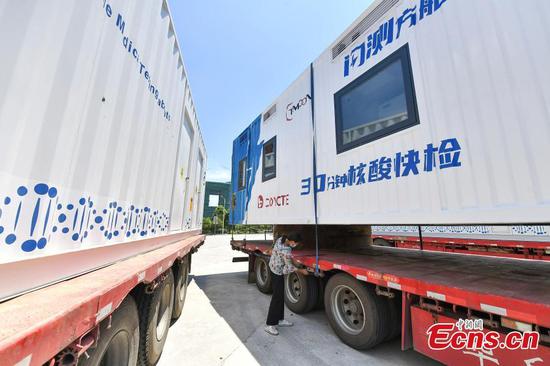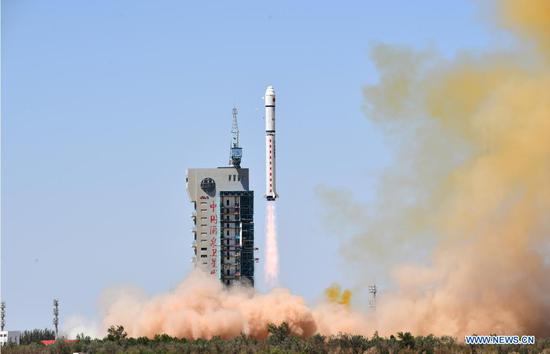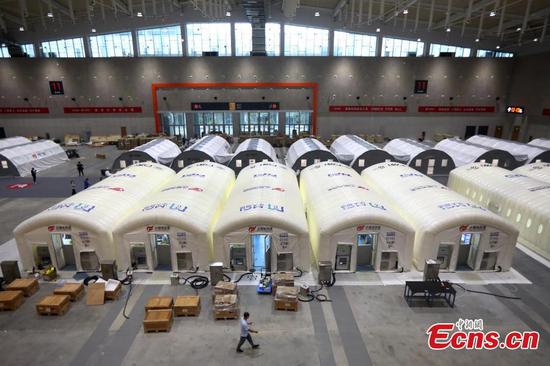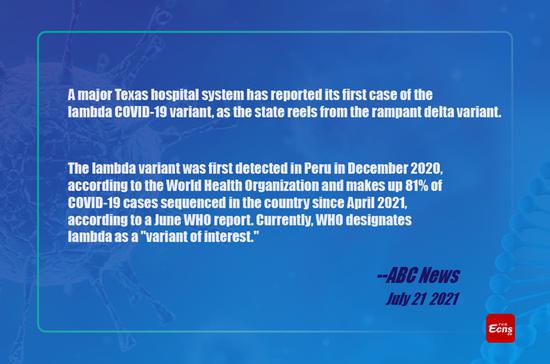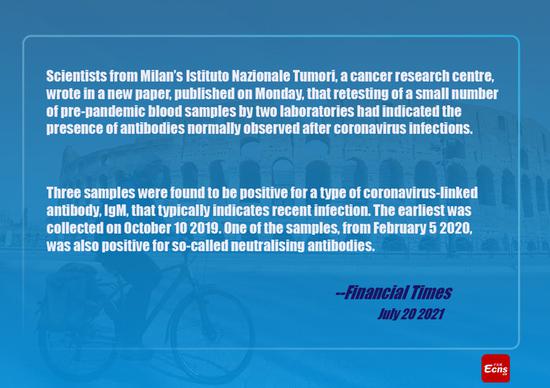The International Monetary Fund (IMF) has approved a new general allocation of Special Drawing Rights (SDR) equivalent to 650 billion U.S. dollars, the largest in the IMF's history, in an effort to boost global liquidity amid the COVID-19 pandemic, according to a statement released Monday.
"This is a historic decision - the largest SDR allocation in the history of the IMF and a shot in the arm for the global economy at a time of unprecedented crisis," said IMF Managing Director Kristalina Georgieva.
Noting that the SDR allocation will benefit all IMF members, address the long-term global need for reserves, build confidence, and foster the resilience and stability of the global economy, Georgieva said it will particularly help the most vulnerable countries struggling to cope with the impact of the COVID-19 crisis.
About 275 billion dollars (about SDR 193 billion) of the new allocation will go to emerging markets and developing countries, including low-income countries, according to the multilateral lender.
"SDRs are a welcome finance mechanism for Zimbabwe and the rest of Africa, they are not conditional, a country can utilize the funds as according to their own blueprints," Gorden Moyo, founder of Public Policy and Research Institute of Zimbabwe, was quoted by the Sunday Mail as saying.
According to the recently released update to the IMF's World Economic Outlook (WEO), many countries entered this crisis with high debt levels and limited resources to ramp up health and social spending, and access to international liquidity is "vital" to help them combat the crisis.
"At a time when many of these countries face difficult choices between meeting essential health and social spending needs, supporting their economies more broadly, and fulfilling obligations on external borrowing, the SDR allocation is set to ease some of the constraints and help them better manage the trade-offs," the report said.
The SDR allocation would also add to existing IMF and broader multilateral efforts, such as the Group of 20 (G20) Debt Service Suspension Initiative, directed toward cushioning the impact of the pandemic on financially constrained economies, according to the report.
Moreover, the IMF noted that the new SDR allocation will "address a long-term global need" to supplement existing reserve assets.
While subject to uncertainty, IMF staff estimates the long-term global need for reserve assets in the range of 1.1 to 1.9 trillion U.S. dollars (about SDR 0.8 to 1.3 trillion) over the next five years. An SDR allocation of 650 billion U.S. dollars (about SDR 453 billion) would cover about 30-60 percent of the estimated global reserve need.
The SDR allocation proposal was delayed for more than a year, as the United States, the IMF's biggest shareholder with a unique veto power, blocked it early last year under the Trump administration. The Biden administration quickly reversed the position and voiced its support for the plan.
The proposal gained wide support during the virtual spring meetings of the IMF and the World Bank held in April, as G20 finance ministers and central bank governors, as well as officials from other IMF members, backed the plan.
The final approval by the IMF board of governors, which requires an 85-percent majority of the total voting power of all IMF members, came just weeks after the IMF executive board approved the proposal.
The new general allocation of SDRs will become effective on Aug. 23, according to the IMF.
The SDR, an international reserve asset created by the IMF in 1969 to supplement its member countries' official reserves, can be exchanged among governments for freely usable currencies in times of need.
So far, SDR 204.2 billion (equivalent to about 293 billion U.S. dollars) have been allocated to members, including SDR 182.6 billion allocated in 2009 in the wake of the global financial crisis, IMF data showed.
The Chinese currency, renminbi, formally became the fifth currency in the SDR basket on Oct. 1, 2016, joining the U.S. dollar, the euro, the Japanese yen, and the British pound.
Georgieva said the IMF will also continue to engage actively with its membership to identify "viable" options for voluntary channeling of SDRs from wealthier to poorer and more vulnerable member countries to support their pandemic recovery and achieve resilient and sustainable growth.
One key option is for members that have strong external positions to voluntarily channel part of their SDRs to scale up lending for low-income countries through the IMF's Poverty Reduction and Growth Trust (PRGT), the statement noted, adding that concessional support through the PRGT is currently interest free.

















